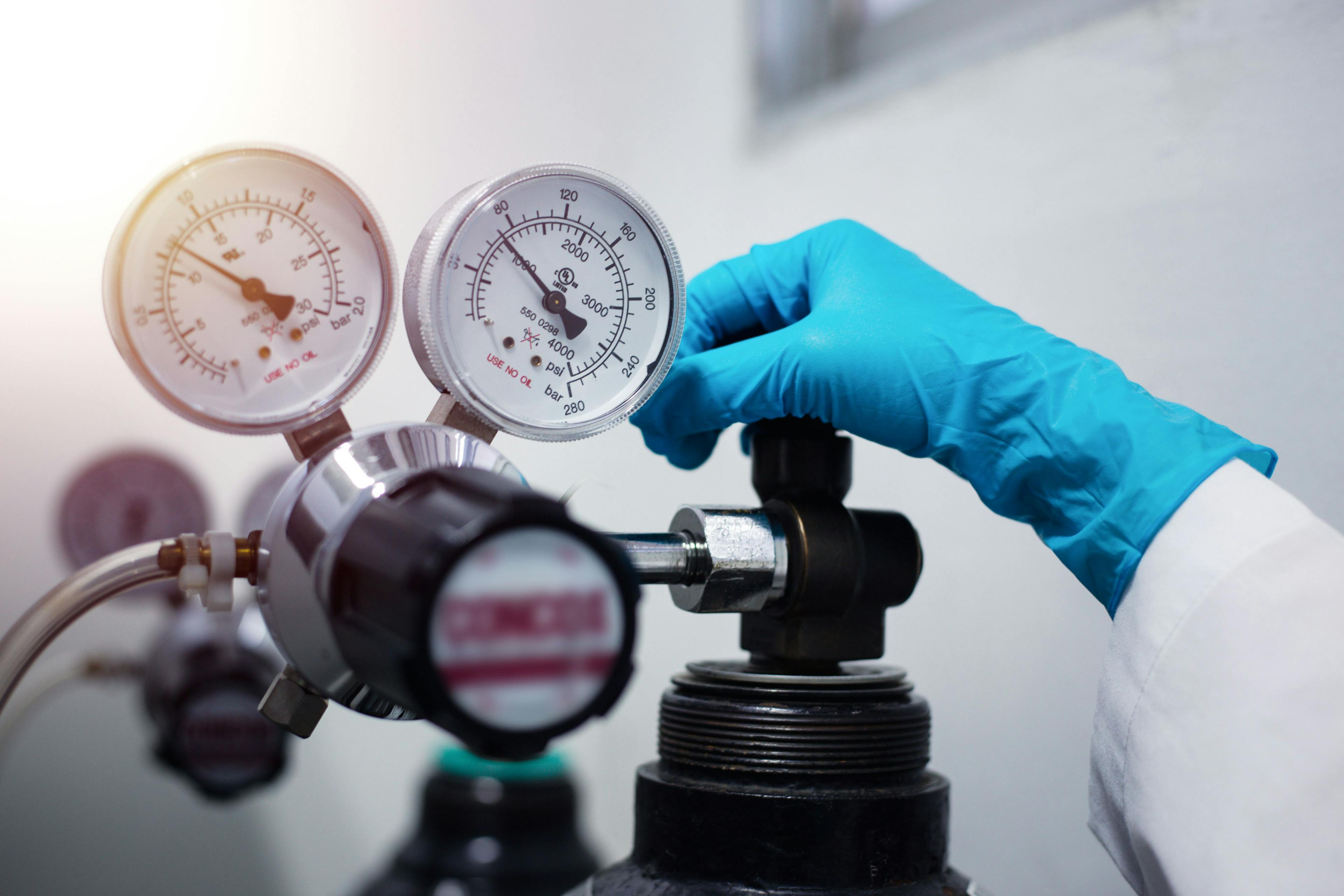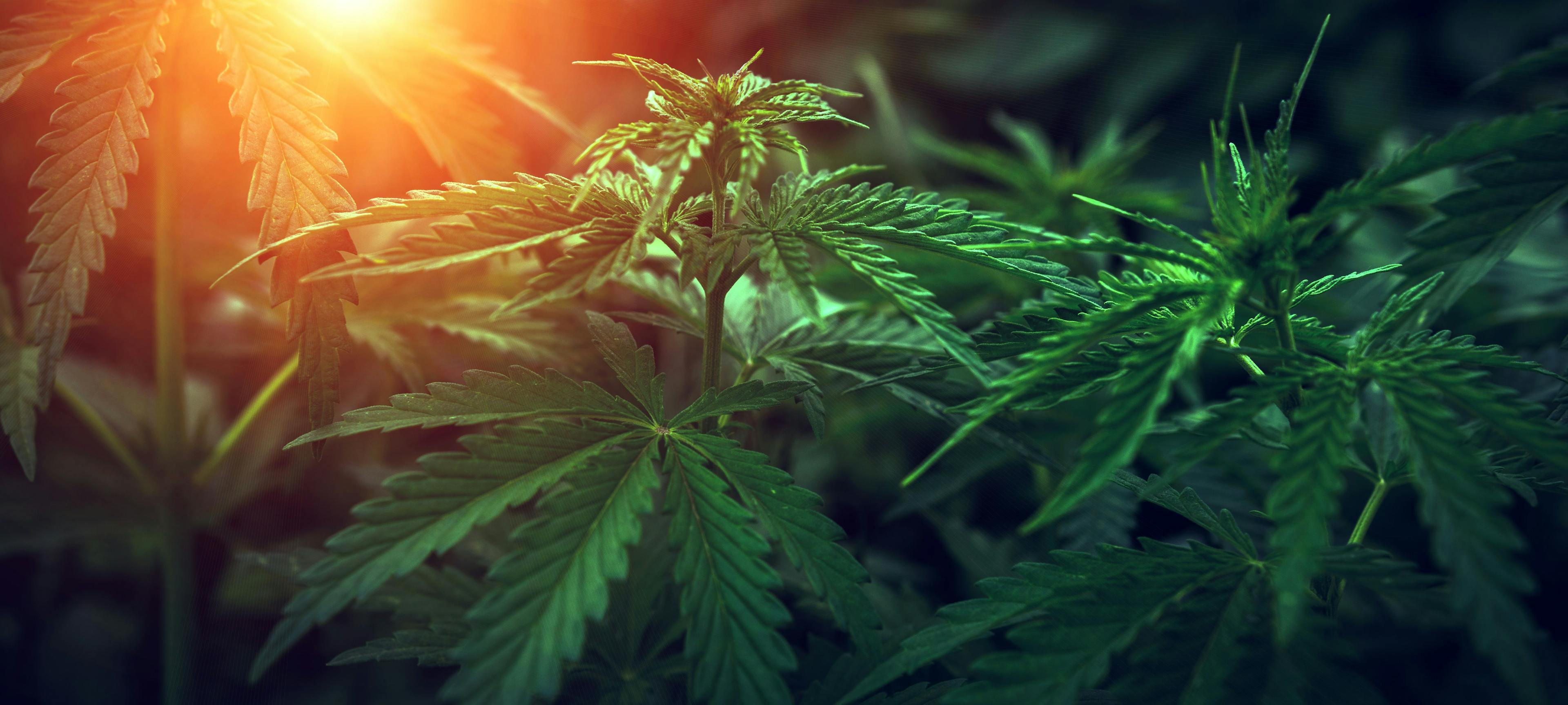Purification and Isolation of Cannabinoids: Current Challenges and Perspectives
The recent legalization of cannabis in many countries and its increased use in scientific and medical research as a result of its therapeutic properties have focused attention on the need for large quantities of highly purified cannabinoids. This is particularly important for the production of (new) analytical-grade standards, used as reference materials, and for the execution of clinical trials to test the biological activity of the single compounds that could potentially be used as new drugs or active pharmaceutical ingredients (APIs). To date, various purification strategies, usually based on several steps, have been proposed with different outcomes. However, all these methods have both advantages and disadvantages. This review will report on the challenges and future perspectives in the purification and isolation of major and minor cannabinoids from cannabis extracts.
Marijuana background at sunset. Bush cannabis | Image Credit: © Lumppini - stock.adobe.com
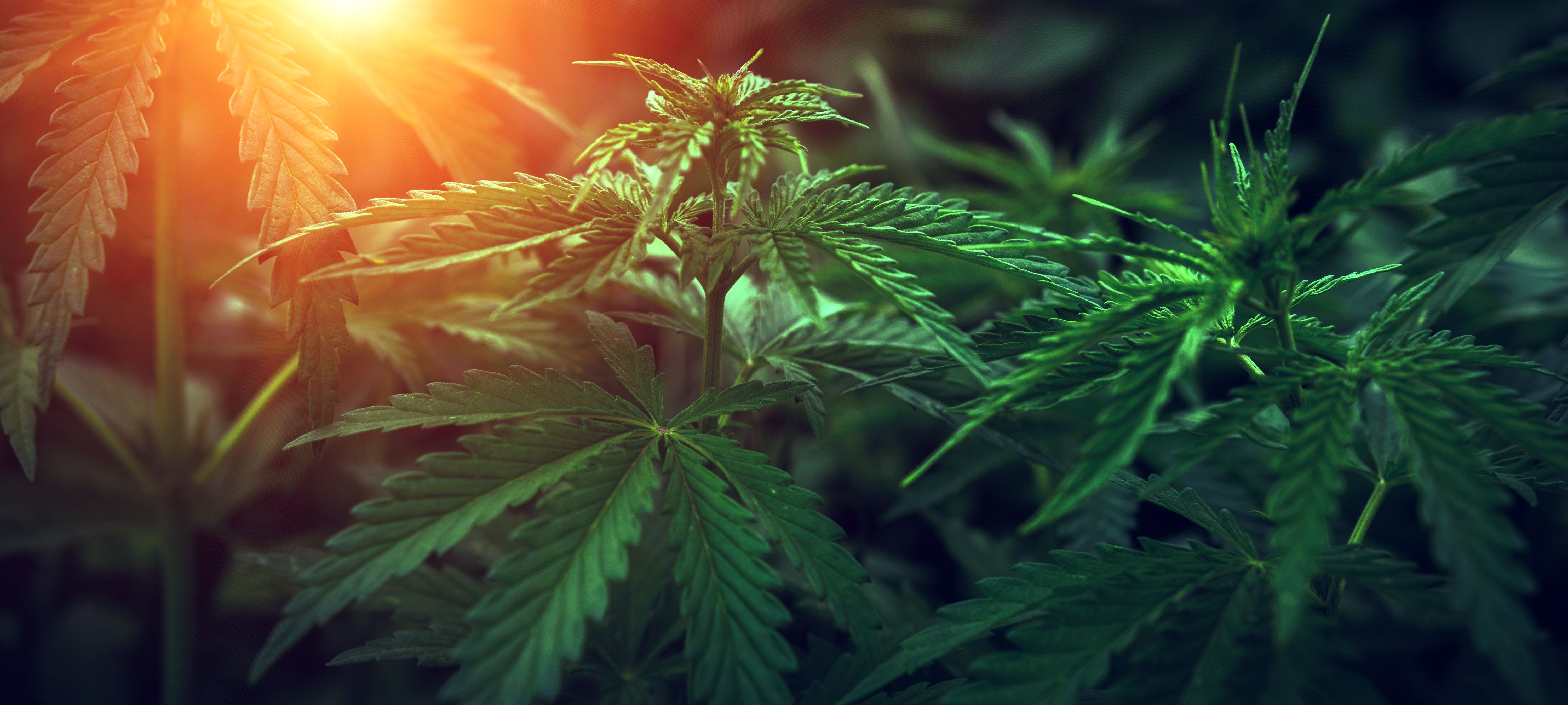
Cannabis sativa L. is one of the most discussed crops in the world. It has been used in food, industrial, agricultural, and medical applications for a long time (1–6). However, its psychoactive effects have led to social and political controversies that have resulted in its classification as an illicit drug. For example, in the US, substances are classified into five schedules under the Controlled Substances Act (CSA), based on their therapeutic potential and the risk of dependency, addiction, and/or abuse. Therefore, cannabis has been categorized as a hallucinogen, with no accepted medical use in the most restricted class of drugs (schedule I) (3,7). Nevertheless, in recent years, cannabis and its related products are increasingly being approved for both medicinal and recreational use. Indeed, their potential therapeutic uses in different diseases, extending from epilepsy to multiple sclerosis and Parkinson’s disease, have emerged.
The positive (and negative) effects of Cannabis sativa L. are the result of phytocannabinoids, which represent the most abundant class of bioactive compounds contained in the plant. They encompass a large family of chiral and achiral secondary plant metabolites, directly produced by the plant in an acidic form, with more than 150 compounds discovered so far. Chemical structures of the main cannabinoids are presented in Figure 1. Despite this structural variability, the vast majority (> 90%) of scientific investigations have focused only on the achiral analysis of two cannabinoids, thanks to their natural abundance in the plant: (–)-Δ9-trans-tetrahydrocannabinol (Δ9-THC) and cannabidiol (CBD) (4). Δ9-THC is known for psychotropic effects, while CBD is not psychoactive. Moreover, despite the large number of discovered cannabinoids, only roughly 20% are available as analytical standards, with some of them available only as racemic or scalemic mixtures, and not as single enantiomers (8).

The absence of well-characterized reference standards imposes limitations on the identification and quantification capability of analytical methods. Indeed, to date, the three official methods for cannabis inflorescence analysis with achiral liquid chromatography (LC) (monographs of cannabis flos of the German, Dutch, and American Herbal Pharmacopoeias) offer the quantification of fewer than 10 cannabinoids, regardless of the stereochemistry of the analytes (9–11). Consequently, the lack of a universally accepted standardized analytical method for the chemo- and enantio-selective analysis of phytocannabinoids and the limited number of cannabinoid reference standard materials make it difficult to obtain a comprehensive characterization of the sample in terms of purity, identification, and concentration of the single species. In addition to the main compounds, other minor non-psychoactive cannabinoids, such as cannabigerol (CBG) and cannabichromene (CBC), have shown interesting qualities, and recently discovered cannabinoids are being reported (8,12). These findings create new perspectives on the possible medical use of cannabinoids. However, specific studies to test the therapeutic or toxic health effects on humans (and animals) of minor cannabinoids, including single enantiomers, have not yet been held. This can be explained by the difficulty involved in isolating sufficient purified quantities of these compounds because of their relatively small concentrations in cannabis plants and extracts—hence the need for accurate and high-throughput purification methods able to isolate sufficient quantities of pure cannabinoids for the production of standards for use in medicinal, analytical, and regulatory applications (8,13).
This review will report on the current challenges and future perspectives of the purification of cannabinoids from cannabis extracts.
Challenges of Current Purification Methods
The growing interest in cannabis and its beneficial effects have led to an increase in the demand for highly efficient and high-throughput methods for the separation of cannabinoids. Particular emphasis is also given to the environmental impact of the whole process. The development of fast, cost-effective, environmentally friendly, and selective methods applied to cannabis is still a challenging task; a sample can contain more than 500 phytochemicals in a highly complex sample matrix (14).
Various methods, based on different techniques, have been described and used for the purification, isolation, and extraction of cannabinoids from different types of samples (8). Among these, one can find both chromatographic and non-chromatographic methods. Chromatography-based methods can be subdivided into two main categories: solid–liquid and liquid–liquid techniques. Solid–liquid techniques include single-column high performance liquid chromatography (batch HPLC), multicolumn countercurrent chromatography (MCCC), and medium-pressure (flash) chromatography; liquid–liquid techniques consist of countercurrent chromatography (CCC) or centrifugal partition chromatography (CPC). Other non-chromatographic-based methods make use of subsequent extraction and recrystallization steps with solvents of different polarity.
However, since cannabis is a botanical matrix, a combination of different methods is usually employed for sample treatment and purification. Indeed, current purification procedures are based on various steps that can be summarized in: (i) decarboxylation, (ii) extraction, and (iii) purification. Other intermediate steps can be included in the procedure, such as precipitation, dissolution, and crystallization.
In the following section the most important applications of large-scale purification methods of cannabinoids based on column chromatography are discussed. Special emphasis is given to the advantages and disadvantages of the different approaches.
Extraction of Cannabinoids
The first step in processing cannabis botanical samples is the extraction of cannabinoids from the matrix. If neutral cannabinoids are the target, a decarboxylation step is included before or after the extraction to convert acidic species to neutral ones. Since cannabinoids are highly lipophilic molecules with a very limited solubility in water (less than 1 μg/mL), they need to be extracted with lower polarity solvents. As an example, CBD has a solubility > 30 mg/mL in ethanol and > 100 mg/mL in hexane (15,16).
Extraction is usually performed in subsequent steps using organic solvents with different polarities or, more recently, with supercritical carbon dioxide (SC-CO2) (13,17–21). The most used solvents are methanol, ethanol, dimethyl sulfoxide (DMSO), methyl tert-butyl ether (MTBE), hexane, heptane, and iso-octane, to name but a few. These solvents represent a clear hindrance to the greening of the entire cannabis purification process, as a result of their toxicity to humans and the environment (22). In order to overcome this issue, supercritical fluid extraction (SFE) is gaining popularity as a greener alternative to organic solvents extraction (OSE). SFE makes use of low toxicity solvents, such as SC-CO2, and produces solvent-free extracts (13).
However, the sole use of OSE or SFE procedures for the isolation of cannabinoids is not sufficient to achieve the desired product purity, which is usually > 90%. Indeed, extraction methods have a limited capacity to discriminate between different cannabinoids because of the very similar chemical structures (Figure 1). This is the reason why extractions are often followed by one or more chromatographic steps, mostly based on flash chromatography (17–19,21,23,24).
Column Chromatography
Preparative single-column LC is by far the most commonly used technique for the purification of different samples, including cannabinoids (8,25). Its success is down to the possibility of using columns packed with porous particles of different sizes, geometries, and functionalization and operated under different elution conditions.
Concerning cannabinoids purification, most examples make use of flash or solid-phase extraction (SPE) column chromatography, either under normal-phase or reversed-phase conditions. The most used stationary phases are silica or alumina for normal-phase operation and C18 for reversed phase. Solvents used in normal-phase applications include pentane, hexane, heptane, iso-octane, petroleum ether, organic ethers, alcohols, esters, or ketones. Solvents for reversed-phase chromatography include water or an acidic buffer, alkanol (methanol, ethanol, and iso-propanol), or acetonitrile (20,21). Many applications include activated charcoal filtration as an optional treatment or as a pre-purification step prior to other chromatographic procedures (17,19).
The introduction of column chromatographic step(s) improves final product outcomes in terms of purity and throughput. However, the use of very large particles with a broad size distribution (20–35 μm or more) as adsorbents, typical of flash and SPE chromatography, is detrimental to the quality of the separation. Indeed, it is widely known that chromatographic efficiency and resolution strongly depend on particle size and its distribution, being inversely proportional (26,27). This causes broad peaks that can overlap, negatively affecting product purity. To alleviate this problem, packing particles with a smaller diameter (between 5 and 15 μm), typically used for HPLC applications, can be effectively used for cannabinoids purification. As an example, Figure 2 compares chromatograms obtained under the same experimental conditions with a HPLC preparative column (100 × 21.2 mm, 5-μm C18) and a flash column (C18, 20–35 μm, 20 g/column) for the separation of a CBD-rich hemp extract (28). The flash column offers very poor resolution, as a result of poor chromatographic efficiency. From a preparative viewpoint, this will result in a collected sample having lower purity and higher dilution when compared to that from the HPLC column separation. Indeed, undesired compounds not fully separated from the target substance will lead to peak contamination and the large peak broadening will force the collection of a wider time window to recover the entire peak.
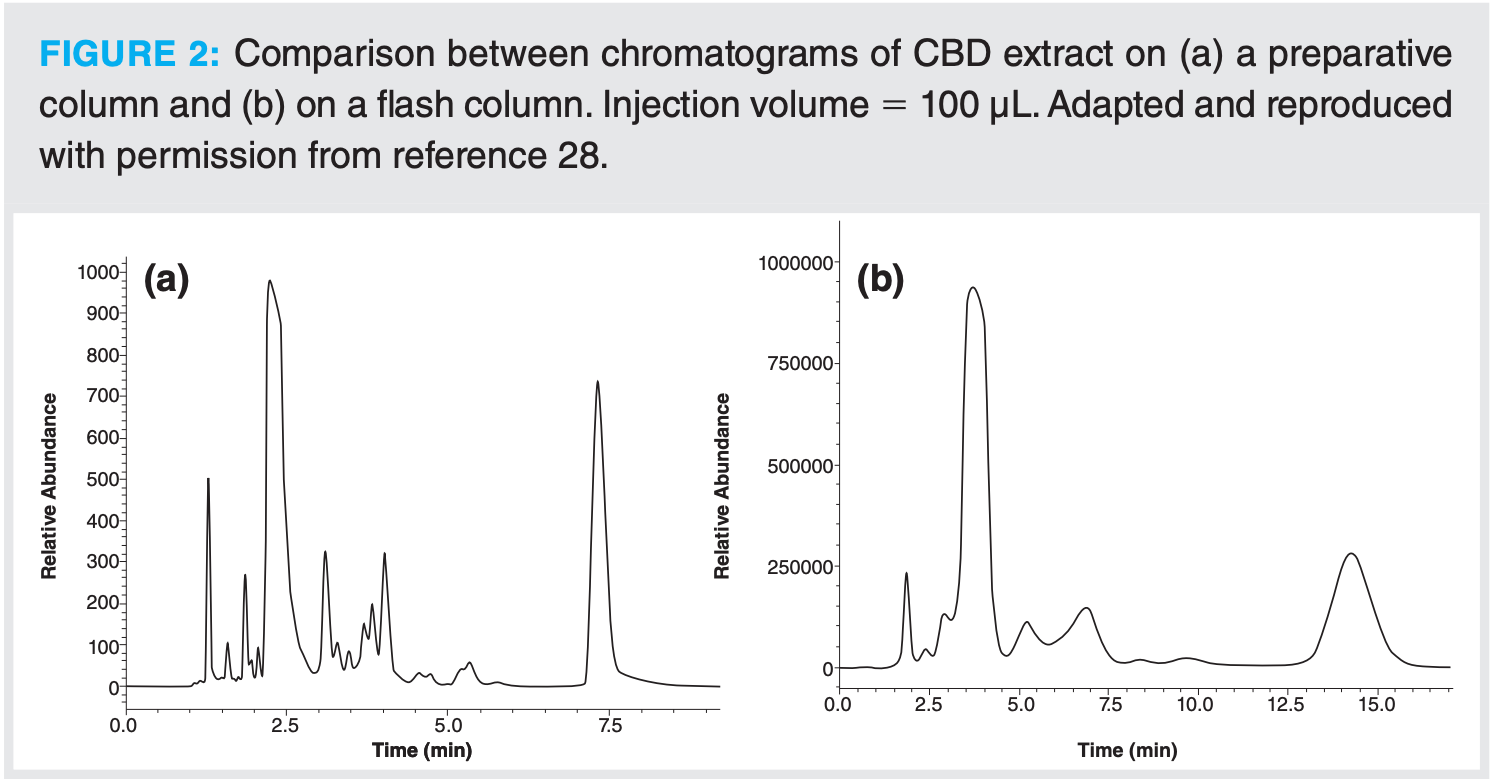
Reversed Phase: Reversed-phase HPLC, with octadecyl silica (C18) as the stationary phase and water–organic mobile phases, still remains the preferred elution mode for the quantification, separation, and isolation of cannabinoids (4,8,29–31). However, despite the great success and the greenness of water-rich mobile phases, they have a clear disadvantage concerning the preparative aspects of cannabis purification. Indeed, as already mentioned, cannabinoids have a very limited solubility in water and are highly lipid-soluble substances (15,16). Therefore, sample extraction and/or dilution need to be performed with organic solvents (ethanol or hexane). This does not present an issue if analytical-scale chromatography is concerned, since injection volume is typically in the range 1–100 μL (that is, < 4% of the total column volume, CV). Otherwise, when dealing with preparative-scale separations, larger injection volumes are often used (> 1 CV). In this case, the diluent has a great influence on sample retention, with high organic contents leading to unretained analytes. This translates into the impossibility of loading volumes as high as in other preparative applications, forcing a decrease in the injection volume to a few microlitres to produce acceptable cannabinoids retention. Consequently, sample preparation and sample injection represent a typical bottleneck of reversed-phase chromatography applied to cannabis purification.
Different preparative methods have been described and proposed for cannabinoids purification. These methods make use of C18 columns and mixtures of water and alcohol as the mobile phase.
In Table 1 (28,32–36), column and injection volumes are reported and compared. These preparative methods use volume percentage related to the ratio of injection and column volumes that are typical of analytical chromatography. This lessens the typical advantages of preparative chromatography when compared to analytical chromatography, that is, high throughput, high productivity, and small solvent consumption. As a matter of fact, current reversed-phase HPLC preparative methods can produce only very small amounts of pure cannabinoids (in the milligram scale) by using hundreds of millilitres of solvents.

Another drawback of reversed-phase elution mode is, despite its high efficiency, the poor selectivity—that is, the difficulty of achieving baseline separation between critical pairs of cannabinoids (CBD/CBG, Δ8-THC/Δ9-THC, and cannabicyclol [CBL]/CBC). This aspect is magnified in nonlinear chromatography, when peaks deviate from the Gaussian profile because of overloading conditions (37). This translates into a product contaminated by other species, depending on the initial composition and purity of the sample. This indicates that performance and outcomes of reversed-phase LC methods are highly dependent on the sample composition.
Nevertheless, preparative reversed-phase HPLC can be used to isolate several cannabinoids (32), where the purification of CBD, cannabinol (CBN), Δ9-THC, CBL, and CBC from a CBD-rich oil is described. A preparative chromatogram showing the collected fractions is presented in Figure 3(a). The results of the analysis of the five highlighted fractions indicate that the purity of CBD was increased from 72 to 93% (fraction 1), CBN from 0.6 to 33% (fraction 2), CBL from 0.5 to 12% (fraction 3), THC from 2.2 to 80% (fraction 4), and CBC from 5.7 to 97% (fraction 5). As an example, the analytical chromatogram of fraction 1 can be seen in Figure 3(b). As already mentioned, the selectivity between CBG and CBD peaks is a critical factor with reversed-phase methods, as shown in Figure 3(b), where CBG cannot be depleted from CBD.
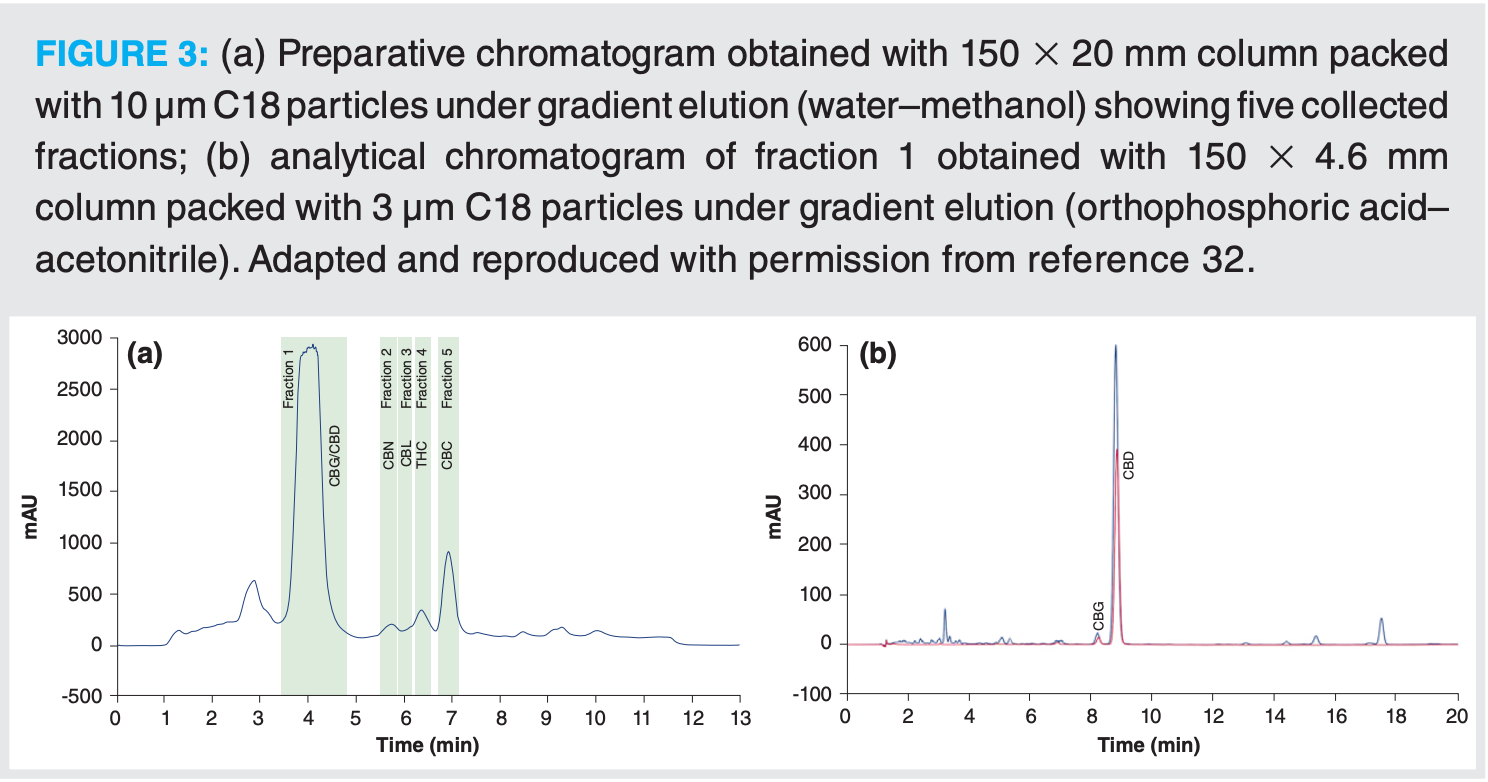
Normal Phase: To date, no examples of HPLC columns operated under normal-phase conditions for this purpose are reported. Alternatively, normal-phase conditions have been effectively applied in flash chromatography for cannabinoids purification, using stationary phases based on bare silica, alumina, or cross-linked dextran-based resin (20,24). Regarding HPLC, some recently published studies have demonstrated the feasibility of other types of adsorbents, namely CN, NH2, and diol stationary phases, for fast cannabinoids isolation (38,39) in normal phase.
It has been proven that normal-phase elution mode—as a result of a different retention mechanism with respect to the reversed-phase mode—provides better resolution and selectivity for some compounds. An example is shown in Figure 4, where the very high selectivity obtained for the pair CBD/CBG (almost coeluting under reversed-phase conditions) is shown.
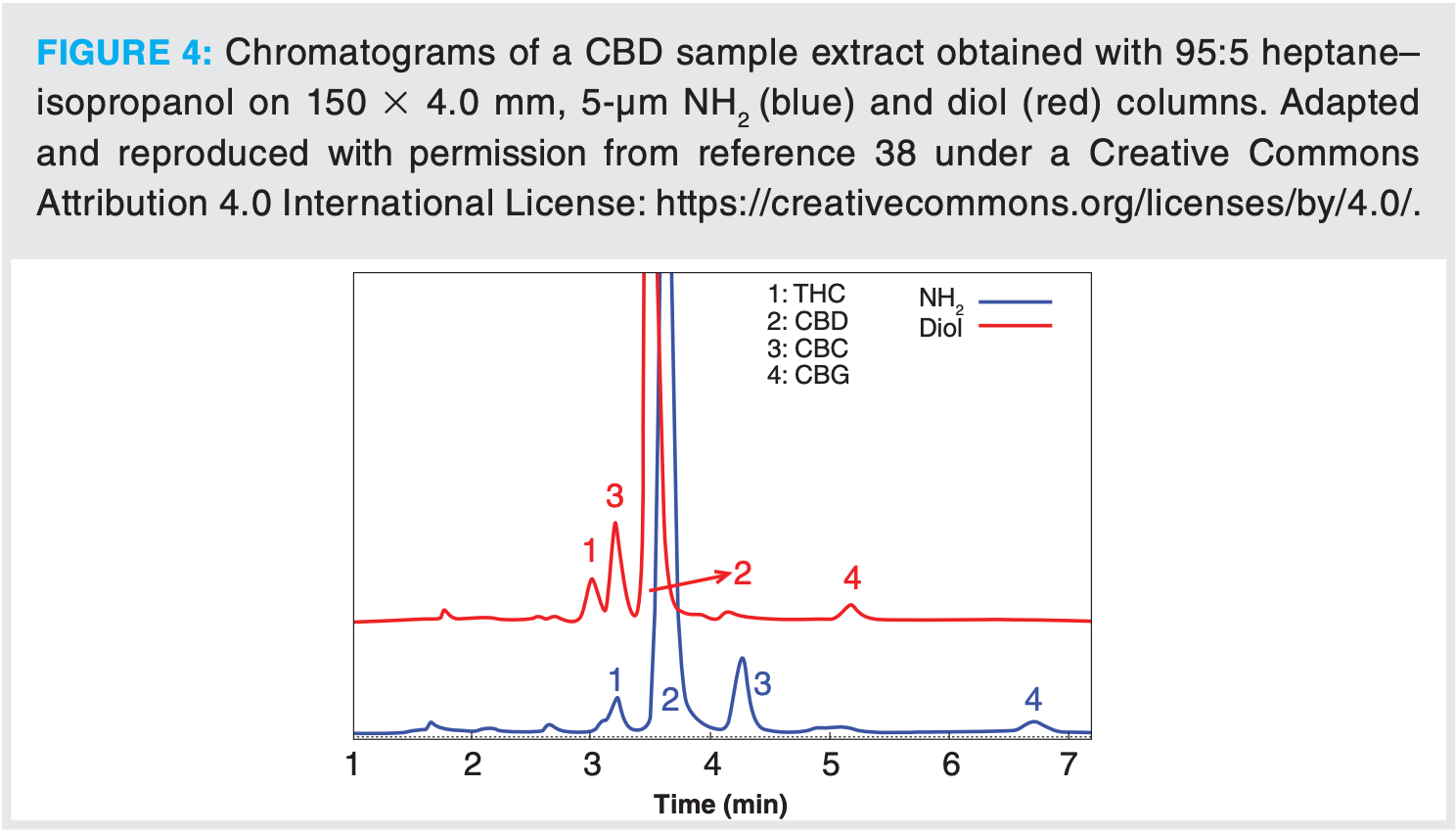
Moreover, the use of apolar organic solvents boosts sample solubility, facilitating sample preparation and increasing column loading. This aspect of the normal-phase mode is of pivotal importance because it leads to smaller solvent consumption, higher throughput, and higher productivity compared to its reversed-phase counterpart. Indeed, with this separation mode, it is possible to extract cannabis samples with an apolar solvent and directly inject the extract into the chromatographic column with high injection volumes (>> 1 CV), without the risk of unretained compounds. Another important aspect to be considered is that the use of low-viscosity solvents makes solvent removal from purified fractions easier, as a result of their volatility, and allows for higher flow rates (faster runs), which is less problematic in terms of pump backpressure.
Concerning the toxicity and adverse effects of apolar organic solvents, the use of heptane, rather than hexane, MTBE, or dichloromethane (DCM), is recommended. Indeed, heptane is classified as a “problematic” solvent, like acetonitrile—the most commonly used mobile phase modifier in reversed-phase chromatography (22).
Supercritical Fluid Chromatography
Supercritical fluid chromatography (SFC) is rapidly gaining in popularity thanks to its interesting characteristics. This technique makes use of mixtures of high-pressurized CO2 mixed with a co-solvent (usually an alcohol). SC-CO2 is a relatively nonpolar solvent, and it has lower viscosity and higher diffusion coefficients compared to liquid mobile phases, permitting an increase in the flow rate without detrimental effects on efficiency and backpressure. Moreover, SC-CO2 is an environmentally friendly solvent that rapidly evaporates, allowing easy sample concentration. For all the reasons mentioned above, SFC has become a reliable and green alternative to normal-phase LC. Indeed, in recent years, it has been largely employed for the enantioseparation of cannabinoids using chiral chromatography on an analytical scale (8,40).
Some works have hypothesized the feasibility of SFC for the preparative isolation of cannabinoids by using achiral columns packed with 5 μm particles (41,42). Indeed, preparative SFC can offer several advantages when compared to classical preparative LC, such as lower organic solvent consumption, higher productivity, rapid solvent removal, and lower environmental impact. However, very few applications of preparative SFC for the isolation of cannabinoids are available.
A 2005 patent (43) describes a two-step purification of chemically synthesized (–)-Δ9-THC by preparative SFC, consisting of a chiral and an achiral separation. The chiral method uses a polysaccharide-based stationary phase supported on macroporous silica gel (20 μm), while the achiral method involves a silica gel or derivatized silica gel separation (10 μm). Subsequent feed injections of 0.85 mL were performed and resulted in the isolation of (–)-trans-Δ9-THC with more than 99% enantiomeric purity.
To date, preparative SFC is not yet a routinely used technique for the green purification of cannabinoids, probably due to its expense and complex constructional setup. However, its broader use in the preparative industrial field may be seen in the near future.
Chiral Methods
Chirality of cannabinoids has been known for decades, with the first report about optical activity of CBD published in 1940 (44). However, this topic has been only marginally considered until recently, when the complete characterization of cannabis extracts and products started to become a topic of medical interest. Indeed, it was discovered that the natural (–)-trans-Δ9 isomer of THC has psychotropic effects, while the corresponding (+)-enantiomer does not. As a consequence, the analysis of the composition of cannabinoids must be carefully evaluated not only in terms of content (the so-called potency) but also considering their enantiomeric purity and stereostability (8,45).
This has focused attention on possible side effects (or even positive properties) of isomers present in natural or chemically synthesized cannabis samples that cannot be detected with classical achiral chromatography. For example, the presence of racemic CBC in cannabis extracts has been observed (46,47), but no information on the biological activity and medicinal properties of the single enantiomers has been reported yet. This draws attention to the need for preparative chiral methods to isolate sufficient amounts of pure single enantiomers to perform clinical trials.
Nevertheless, the employment of chiral preparative chromatography for cannabinoids isolation is still a largely unexplored area, with very few examples of application.
As previously mentioned, a preparative SFC chiral method, combined with an achiral method, was able to produce +99% pure (−)-trans-Δ9-THC (43). Flash chiral chromatography has also been used for the purification of optically pure (−)-trans-Δ9-THC (> 99%), from the racemic mixture, on an amylose-based chiral stationary phase (48).
Evidence showing that both reversed-phase and normal-phase chiral HPLC can be used for enantio-purification based on polysaccharide stationary phases is reported in some recently published studies (49–51).
Continuous Chromatography
The isolation of pure cannabinoids from real matrices can be highly demanding, as many commonly used methods do not provide sufficient selectivity and resolution. This results in peak overlap that causes a very narrow region of the chromatogram where the target compound can be collected with acceptable purity. This intrinsic limitation of single column chromatography is called yield-purity trade-off. However, it can be overcome by multicolumn countercurrent continuous (or semicontinuous) techniques (8,25).
Among these techniques, simulated moving bed (SMB) has long been used for the purification of cannabinoids in both laboratory- and pilot-scale procedures. SMB can be effectively applied in binary or pseudo-binary separations, as it is able to divide the feed mixture into two fractions. This also represents the biggest limitation of this process because it can only be applied to relatively simple mixtures. Nevertheless, SMB allows for higher productivity with respect to the batch process, thanks to a continuous sample loading and a reduction of solvent consumption. Moreover, it can provide 100% recovery in case of peak overlap (52).
In some patents (53,54) SMB technology has been applied to the purification of Δ9-THC obtained by enantiopure synthesis. The raw feed product had a Δ9-THC content of 65–75%, and 20–30% of Δ8-THC as the main impurity. The purification process was conducted using C18 columns with particle size of 10 to 100 μm under reversed-phase conditions, using a mobile phase mixture of methanol (62%), tetrahydofuran (17%), and water (21%), leading to > 99% THC purity. Two patents (55,56) describe a method for the purification, separation, and enrichment of CBD that includes a sequence of purification steps and SMB process using modified activated carbon (45 to 1700 μm), modified hydrophobic adsorbent (styrene-divinylbenzene) resin, or a poly-(methyl-methacrylate) (PMMA) resin (25 μm and 300 μm) under reversed-phase conditions.
SMB chromatography can be used for continuous THC remediation from a sample, using only one chromatographic step, and with clear advantages from an industrial and commercial viewpoint.
In the very near future, HPLC columns may be coupled to the SMB technique and operated under normal-phase elution conditions. This combination could be highly advantageous for cannabinoids purification, for all the reasons mentioned, allowing for continuous streams of highly concentrated feed and purified compounds.
Another recently developed multicolumn technique is multicolumn countercurrent solvent gradient purification (MCSGP). This technique permits gradient elution, ternary separations, and the internal recycling of overlapping areas, with clear advantages for productivity and solvent consumption when compared to single-column purification. Twin-column MCSGP has been applied to CBD purification under reversed-phase conditions using C18 columns (15 μm). The sample had an initial purity of > 85% and the final product was > 99.5% pure. However, the product also contained small quantities of cannabidivarin (CBDV), cannabidiolic acid (CBDA), and CBG (34). As has already been seen for reversed-phase chromatography, the outcome of the purification process depends on the composition of the feed mixture, making the process not universally applicable.
Conclusions
To date, no universally applicable preparative method has been developed for cannabinoids purification. As a consequence, purification methods need to be chosen depending on the complexity of the sample (initial target purity and concentration, number of other cannabinoids).
Various methods based on column chromatography are currently available with this aim at different degrees of purification. Flash chromatography has been the method of choice to produce pure cannabinoids or as a pre-purification step, but preparative HPLC is becoming established as a more efficient option. Preparative reversed-phase HPLC, using either achiral or chiral separations, is only successful on a very small scale because of the limited solubility of cannabinoids in water-based solvents. Valuable alternatives are normal-phase HPLC and SFC.
The future of preparative chromatography applied to cannabinoids purification will be devoted to the development of efficient, green, cost-effective, and fast methods able to produce highly pure compounds. In this regard, the coupling of HPLC columns operated in normal-phase elution mode to continuous multicolumn techniques, such as SMB and MCSGP on the one hand, and the use of SFC on the other, means there will be plenty of room for improvement in the field, contributing to increased research productivity.
References
(1) Crowther, S. M.; Reynolds, L. A.; Tansey, E. M. The Medicalization of Cannabis Wellcome Witnesses to Twentieth Century Medicine, Vol. 40; Wellcome Trust Centre for the History of Medicine, 2010.
(2) Potter, D. Cannabis Horticulture. In Handbook of Cannabis, Pertwee, R., Ed.; Oxford University Press, 2014.
(3) Mead, A. Legal and Regulatory Issues Governing Cannabis and Cannabis-Derived Products in the United States. Front. Plant Sci. 2019, 10, 697. DOI: 10.3389/fpls.2019.00697
(4) Capriotti, A. L.; Cannazza, G.; Catani, M.; et al. Recent Applications of Mass Spectrometry for the Characterization of Cannabis and Hemp Phytocannabinoids: From Targeted to Untargeted Analysis. J. Chromatogr. A 2021, 1655, 462492. DOI: 10.1016/j.chroma.2021.462492
(5) Cerino, P.; Buonerba, C.; Cannazza, G.; et al. A Review of Hemp as Food and Nutritional Supplement. Cannabis Cannabinoid Res. 2021, 6, 19–27. DOI: 10.1089/can.2020.0001
(6) Sirangelo, T. M.; Ludlow, R. A.; Spadafora, N. D. Multi-Omics Approaches to Study Molecular Mechanisms in Cannabis sativa. Plants 2022, 11 (16), 2182. DOI: 10.3390/plants11162182
(7) Yeh, B. T. The Controlled Substances Act: Regulatory Requirements; Congressional Research Service, 2012.
(8) Felletti, S.; De Luca, C.; Buratti, A.; et al. Potency Testing of Cannabinoids by Liquid and Supercritical Fluid Chromatography: Where We Are, What We Need. J. Chromatogr. A 2021, 1651, 462304. DOI: 10.1016/j.chroma.2021.462304
(9) Deutsches Arzneibuch 2018 (DAB), Allgemeiner Teil. Monographien Cannabisblüten-Cannabis flos; Deutscher Apotheker Verlag, 2018.
(10) Dutch Office for Medicinal Cannabis, CIBG Ministerie van Volksgezondheid, Welzijn en Sport; Analytical Monograph Cannabis flos, Version 7.1, 2014.
(11) American Herbal Pharmacopoeia, Cannabis Inflorescence and Leaf. 2013. https://american-safe-access.s3.amazonaws.com/documents/AHP_Cannabis_Monograph_Preview.pdf (accessed 2023-03-15).
(12) Citti, C.; Russo, F.; Sgrò, S.; et al. Pitfalls in the Analysis of Phytocannabinoids in Cannabis Inflorescence. Anal. Bioanal. Chem. 2020, 412, 4009–4022. DOI: 10.1007/s00216-020-02554-3
(13) Gallo-Molina, A. C.; Castro-Vargas, H. I.; GarzónMéndez, W. F.; et al. Extraction, Isolation and Purification of Tetrahydrocannabinol from the Cannabis Sativa L. Plant Using Supercritical Fluid Extraction and Solid Phase Extraction. The Journal of Supercritical Fluids 2019, 146, 208–216. DOI: 10.1016/j.supflu.2019.01.020
(14) Pertwee R. G. Ed., Handbook of Cannabis, 1st Ed.; Oxford University Press, 2014.
(15) Wright, S.; Wilkhu, J.-D. ORAL CANNABINOID FORMULATIONS. WO 2018/150182 Al, 2018.
(16) Technobis, Optimizing the CBD Crystallization Process. Technobis Crystallization Systems Application Note, 2023. https://www.crystallizationsystems.com/publications/appnoteoptimizi zg-the-cbd-crystallization-process/
(17) Goodwin, N. J.; Archer, N. J.; Murray, C.; Greenwood, A. K.; McHattie, D. PRODUCTION OF Δ9 TETRAHYDROCANNABINOL. US 7 592 468 B2, 2009.
(18) Bhatarah, P.; McHattie, D.; Greenwood, A. K. Production of Delta 9 Tetrahydrocannabinol. WO 2009/133376, 2009.
(19) Flockhart, I.; Wheatley, G. W.; Dring, S.; Archer, L. Method of Preparing Cannabidiol from Plant Material. US 2006/0167283 A1, 2006.
(20) Roura, X. N. Methods of Purifying Cannabinoids, Compositions and Kits Thereof. US 2016/0214920 A1, 2016.
(21) Elsohly, M. A.; Ross, S. A. Method of Preparing Delta-9-Tetrahydrocannabinol. US 6 365 416 B1, 2002.
(22) Ferrazzano, L.; Catani, M.; Cavazzini, A.; et al. Sustainability in Peptide Chemistry: Current Synthesis and Purification Technologies and Future Challenges. Green Chemistry 2022, 24 (3), 975–1020. DOI: 10.1039/D1GC04387K
(23) Flockhart, I.; Wheatley, G. W.; Dring, S.; Archer, L. Methods of Purifying Cannabinoids from Plant Material. WO 2004/026857, 2004.
(24) Wohlfarth, A.; Mahler, H.; Auwärter, V. Rapid Isolation Procedure for Δ9-tetrahydrocannabinolic Acid A (THCA) from Cannabis Sativa Using Two Flash Chromatography Systems. J. Chromatogr. B 2011, 879, 3059–3064. DOI: 10.1016/j.jchromb.2011.09.012
(25) De Luca, C.; Felletti, S.; Lievore, G.; et al. Modern Trends in Downstream Processing of Biotherapeutics Through Continuous Chromatography: The Potential of Multicolumn Countercurrent Solvent Gradient Purification. TrAC Trends in Analytical Chemistry 2020, 132, 116051. DOI: 10.1016/j.trac.2020.116051
(26) Gritti, F.; Bell, D. S.; Guiochon, G. Particle Size Distribution and Column Efficiency. An Ongoing Debate Revived with 1.9μm Titan-C18 Particles. J. Chromatogr. A 2014, 1355, 179–192. DOI: 10.1016/j.chroma.2014.06.029
(27) Ismail, O. H.; Catani, M.; Pasti, L.; et al. Experimental Evidence of the Kinetic Performance Achievable with Columns Packed with New 1.9μm Fully 130 LCGC Europe April 2023 FELLETTI ET AL. Porous Particles of Narrow Particle Size Distribution. J. Chromatogr. A 2016, 1454, 86–92. DOI: 10.1016/j.chroma.2016.05.038
(28) Preston, J.; Orlowicz, S. THC Remediation from CBD Extract to Demonstrate Running Flash Chromatography on a Prep HPLC Instrument. Phenomenex Application Note, 2020.
(29) Raharjo, T. J.; Verpoorte, R. Methods for the Analysis of Cannabinoids in Biological Materials: A Review. Phytochem Anal. 2004, 15, 79–94. DOI: 10.1002/pca.753
(30) Nahar, L.; Onder, A.; Sarker, S. D. A. A Review on the Recent Advances in HPLC, UHPLC and UPLC Analyses of Naturally Occurring Cannabinoids (2010-2019). Phytochem Anal. 2020, 31 (4), 413–457. DOI: 10.1002/pca.2906
(31) Citti, C.; Braghiroli, D.; Vandelli, M. A.; Cannazza, G. Pharmaceutical and Biomedical Analysis of Cannabinoids: A Critical Review. J. Pharm. and Biomed Anal. 2018, 147, 565–579. DOI: 10.1016/j.jpba.2017.06.003
(32) Krauke, Y.; Monks, K. Purify CBD and other Cannabinoids by Preparative HPLC. Knauer Wissenschaftliche Geräte GmbH, VPH0073 Application Note, 2020.
(33) Krauke, Y.; Monks, K. Purification of Cannabidiol from CBD Oil by Preparative HPLC. Knauer Wissenschaftliche Geräte GmbH, VPH0074 Application Note, 2020.
(34) ChromaCon, Highly Pure Cannabidiol (CBD) by Twin-Column Chromatography (MCSGP). ChromaCon Application Note, P2.V2, 2019. https://www.chromacon.com/resources/public/lava3/media/kcfinder/files/CBD_MCSGP_application_note.pdf
(35) Rieck, F. Purification of Cannabinoids from a Cannabis Sativa Extract. Agilent Technologies Inc. Application Note 5994-1773EN, DE.1299305556, 2020. https://www.agilent.com/cs/library/applications/applicationcannabinoids-purification-1290-infinity-iiautoscale-prep-lc-msd-5994-1773en-agilent.pdf
(36) Aubin, A. Purification of Cannabidiol from Hemp Oil Using the Prep150 LC System. Waters Corporation Application Note, 2015. https://www.waters.com/content/dam/waters/en/appnotes/2015/720005287/720005287-en.pdf
(37) Guiochon, G.; Felinger, A.; Shirazi, D. G.; Katty, A. M. Fundamentals of Preparative and Nonlinear Chromatography, 2nd ed.; Academic Press, 2006.
(38) De Luca, C.; Buratti, A.; Krauke, Y.; et al. Investigating the Effect of Polarity of Stationary and Mobile Phases on Retention of Cannabinoids in Normal Phase Liquid Chromatography. Anal. Bioanal. Chem. 2022, 414 (18), 5385–5395. DOI: 10.1007/s00216-021-03862-y
(39) Felletti, S.; Krauke, Y.; Stephan, S.; Monks, K. Determination of Retention Behavior of Cannabis Extract by Column Screening. Knauer Wissenschaftliche Geräte GmbH, VFD0189 Application Note, 2020.
(40) Felletti, S.; Ismail, O. H.; De Luca, C.; et al. Recent Achievements and Future Challenges in Supercritical Fluid Chromatography for the Enantioselective Separation of Chiral Pharmaceuticals. Chromatographia 2019, 82, 65–75. DOI: 10.1007/s10337-018-3606-1
(41) Przybyciel, M.; Kohler, D. A. The SFC Isolation and Purification of Cannabinoids using Application Specific Stationary Phases Under Optimised Conditions. Chromatography Today 2020, 43–46.
(42) Franklin, E. G.; Wilcox, M. Purification of CBD Extracts using SFC and a Celeris 4-Ethyl Pyridine Column. Regis Technologies Application Note, 2019. https://www.registech.com/download/purification-of-cbd-extracts-using-sfc-and-a-celeris-4-ethyl-pyridine-column/
(43) Geiser, F. O.; Keenan, J. J.; Rossi, R.; Sanchez, A.; Whelan, J. M. Process for Purifying (–)-δ9-TransTetrahydrocannabinol. WO 2005/061480 Al, 2005.
(44) Adams, R.; Hunt, M.; Clark, J. H. Structure of Cannabidiol, a Product Isolated from the Marihuana Extract of Minnesota Wild Hemp. I. J. Am. Chem. Soc. 1940, 62, 196–200. DOI: 10.1021/ja01858a058
(45) Challener, C. Analysis of mRNA Therapeutics and Vaccines. Pharmaceutical Technology 2022, 46 (2), 16–21.
(46) De Luca, C.; Buratti, A.; Umstead, W.; et al. Investigation of Retention Behavior of Natural Cannabinoids on Differently Substituted Polysaccharide-Based Chiral Stationary Phases Under Reversed-Phase Liquid Chromatographic Conditions. J. Chromatogr. A 2022, 1672, 463076. DOI: 10.1016/j.chroma.2022.463076
(47) Mazzoccanti, G.; Ismail, O. H.; D’Acquarica, I.; et al. Cannabis Through the Looking Glass: Chemo- and Enantio-Selective Separation of Phytocannabinoids by Enantioselective Ultra High Performance Supercritical Fluid Chromatography. Chem. Commun. 2017, 53, 12262. DOI: 10.1039/C7CC06999E
(48) Gutman, A. L.; Etinger, M.; Fedotev, I.; et al. Methods for Purifying Trans-(−)-Δ9- Tetrahydrocannabinol and Trans-(+)-Δ9- Tetrahydrocannabinol. US 9 278 083 B2, 2016.
(49) De Luca, C.; Buratti, A.; Umstead, W.; et al. Investigation of Retention Behavior of Natural Cannabinoids on Differently Substituted Polysaccharide-Based Chiral Stationary Phases Under Reversed-Phase Liquid Chromatographic Conditions. J. Chromatogr. A 2022, 1672, 46307. DOI: 10.1016/j.chroma.2022.463076
(50) Onishi, T.; Umstead, W. J. The Separation of Cannabinoids on Sub-2 µm Immobilized Polysaccharide Chiral Stationary Phases. Pharmaceuticals 2021, 14 (12), 1250. DOI: 10.3390/ph14121250
(51) Ferraro, J. M.; Umstead, W. J. Chiral Separation of Cannabichromene, Cannabicyclol, and Their Acidic Analogs on Polysaccharide Chiral Stationary Phases. Molecules 2023, 28 (3), 1164. DOI: 10.3390/molecules28031164
(52) Knauer SMB Systems and Large Scale Cannabinoids Purification. https://www.knauer.net/en/Blog/SMB-Systems-and-Large-Scale-THC-Purification (accessed 2023-03-16).
(53) Erfurt, H.; Weber, M.; Niemeyer, H. -J.; Götz, M. R.; Winkler, M. Method for Purifying Cannabinoid Compounds. US 10 647 691 B2, 2020.
(54) Erfurt, H.; Weber, M.; Niemeyer, H. -J.; Götz, M. R.; Winkler, M. Method for Purifying Cannabinoid Compounds via Simulated Moving Bed Chromatography. EP 3 455 213 B1.
(55) Oroskar, A. R.; House, D. W.; Edirisinghe, P. D.; et al. Process for Separating a Constituent/ Cannabinoid Using a Chromatographic Resin. US 2019/0010110A1, 2019.
(56) Oroskar, A. R.; House, D. W.; Edirisinghe, P. D.; et al. Process for Separating a Constituent/ Cannabinoid Using a Chromatographic Resin. US 11 078 145 B2, 2021.
About the Authors
Simona Felletti is currently working as a postdoctoral research fellow at the University of Ferrara and collaborates with Knauer.
Greta Compagnin is a Ph.D. student at the University of Ferrara and is spending a research period at Knauer in Berlin, Germany.
Yannick Krauke is a senior application scientist purification at Knauer.
Svea Stephan is an application scientist customized solutions at Knauer.
Giorgia Greco is head of product management, analytical & application solutions at Knauer.
Alessandro Buratti is a Ph.D. student at the University of Ferrara.
Tatiana Chenet is a postdoctoral research fellow at the University of Ferrara.
Chiara De Luca is a postdoctoral research fellow at the University of Ferrara.
Martina Catani is an assistant professor at the University of Ferrara.
Alberto Cavazzini has been full professor of analytical chemistry at the University of Ferrara since 2014.

New Method Explored for the Detection of CECs in Crops Irrigated with Contaminated Water
April 30th 2025This new study presents a validated QuEChERS–LC-MS/MS method for detecting eight persistent, mobile, and toxic substances in escarole, tomatoes, and tomato leaves irrigated with contaminated water.
University of Tasmania Researchers Explore Haloacetic Acid Determiniation in Water with capLC–MS
April 29th 2025Haloacetic acid detection has become important when analyzing drinking and swimming pool water. University of Tasmania researchers have begun applying capillary liquid chromatography as a means of detecting these substances.
Prioritizing Non-Target Screening in LC–HRMS Environmental Sample Analysis
April 28th 2025When analyzing samples using liquid chromatography–high-resolution mass spectrometry, there are various ways the processes can be improved. Researchers created new methods for prioritizing these strategies.

.png&w=3840&q=75)

.png&w=3840&q=75)



.png&w=3840&q=75)



.png&w=3840&q=75)

